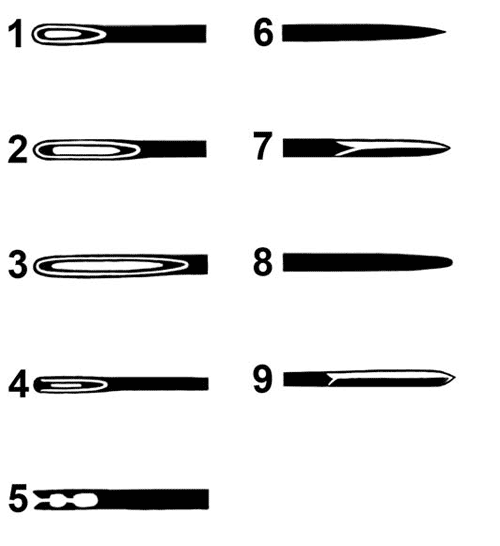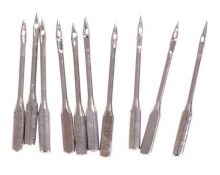A needle is the simplest and most primitive sewing tool that cannot be replaced by anything. The first samples were invented by primitive people, who made something like clothing from animal skins. They made them from small bones or sharpened pieces of wood and other available materials. Today, needles are still in use, and it is worth saying that the modern selection is richer and more varied than many years ago. Do you want to know what types of needles exist and what they are needed for?
Types of needles and their purpose
Today, these tools, indispensable for the sewing craft, are divided into several groups:

Ordinary for sewing
They can be purchased as a set of 10–12 pieces. Each has its own number, which indicates its thickness. So, number 1 will be a needle with a diameter of 0.6 mm, intended for stitching cotton materials. The larger the number, the denser the fabric underneath should be. The thickest ones - No. 10-12 - are suitable for creating things from heavy and rough fabric.Their diameter is from 1.2 to 1.8 mm.
Darning
Their peculiarity is the presence of an oblong eye, which allows you to easily insert the thread. Their tip usually has the shape of a cone and is slightly blunt. These needles are produced under three numbers:
- 1 - 37 mm;
- 2 - 40 mm;
- 3 - 58 mm.
For knitwear
This variety differs in the shape of the tip. It is always rounded, which allows you not to tear the fabric, but to gently push its fibers apart.
For embroidery
To work with floss and large canvas, you can use needles with a blunt tip. They are usually large, thick, with a wide ear. For embroidery on small canvas and other fabrics, those numbered o, 1, 2 are used. Their length usually varies from 3.5 to 4 cm.
Furriers
These needles are distinguished by a special sharpening of the tip, which has a triangular shape. Product length - from 4 to 5 cm, numbers - from 1 to 3.
Saddlers
Designed for sewing shoes and belts made of genuine leather. If you compare them with ordinary needles, you will notice that the tip, although it does not have edges, is more blunt.

Bags
Designed specifically for lining bales and sewing bags with fabric. They have a tetrahedral sharpening, the tip is flattened and bent upward. The length of the bag needles is from 12 to 16 cm.
Furniture
These tools have a curved shape and are considered the most difficult to use for sewing regular items. But if there is a need to connect upholstery parts of upholstered furniture, they are irreplaceable.
Machine
Needles intended for sewing machines can be easily distinguished from each other by their letter markings:
- H-J - with a pointed tip for thick and heavy materials;
- H-M - sharp, for thin, densely woven materials;
- H-S - for elastic, knitted fabrics, with a slightly rounded tip tip and an edge that allows you to avoid skipping;
- H-E - embroidery needles, which have a rounded tip with a special notch and a slightly larger eye;
- H-Q - stitching needles, quilting;
- H-SUK - for dense knitted fabrics with a rounded point;
- H-LR, H-LL - for genuine leather;
- H-ZWI - double needles;
- H-DRI - triple;
- ELx705 or HAx1 SP - this code designates products for overlockers and cover stitching machines.

@Market.kz
Manufacturers have not forgotten about people with special needs. For them, needles with a double-shaped eye were created: the upper one with a slot, the lower one ordinary. This structure makes threading easier and faster.


 0
0





